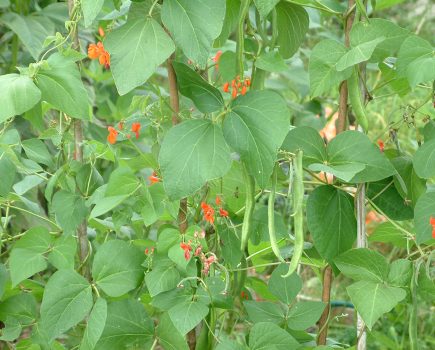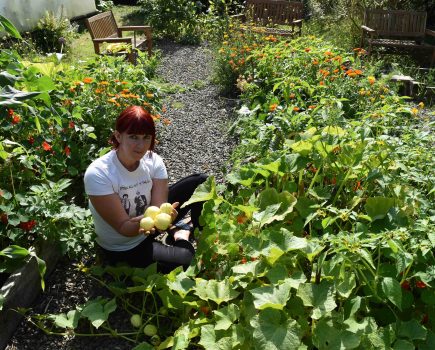Career smallholder Tim Tyne explains how important it is to factor insurance into plans to ‘downshift’. Plus more of Tim’s smallholding tips..
Don’t forget the insurance
When planning to ‘downshift’, you’ll need to do a few calculations to work out whether you can actually afford the change in lifestyle. Basically this means preparing a budget and cash-flow forecast for the next few years. Some costs will be glaringly obvious – mortgage, for example. This is intrinsically tied up with your move, so is not something you’re likely to overlook. And, if you are intending to continue with the ‘day job’, then the cost of commuting is relatively straightforward to calculate, based on daily mileage if driving, or the price of a season ticket if using public transport (or, as is most likely, a combination of the two). Expenditure associated with running a smallholding, such as the initial purchase price of any livestock you might want to keep, the cost of feeding them, and any contractors charges such as fencing or building work, can be estimated by using published data, researching on the internet or simply asking around locally. Although it sounds pretty dull it can actually be quite exciting, putting together a plan for the financial management of your prospective smallholding (and hence a plan for your life for the foreseeable future).
However, there’s one cost that people always tend to forget when preparing smallholding / lifestyle budgets, and that’s insurance. In this age of litigation it really isn’t something that you can afford to neglect. Anyone who’s previously run their own business shouldn’t have any trouble understanding what cover is needed, but many people’s experience of insurance is limited to the basics of car and home protection policies. In addition to these, you’re now going to need public liability cover, in the event that anyone injures themselves while on your holding (even if they’re not supposed to be there); employer’s liability to cover anyone helping you (including volunteers); protection for your outbuildings and all the stuff (including hay, straw and feed) stored in them; cover for your livestock (not only to protect them against disasters such as dog attacks, but also to protect you in the event that your animals stray onto the highway and cause an accident); cover for your machinery and so on. And you may find that your new way of life necessitates the running of a much larger vehicle for towing, in addition to the smaller car you might use for commuting.
To give you an idea of the costs involved, here’s a breakdown of our own monthly insurance bill:
• Business combined policy (including public & product liability, employer’s liability, farm buildings, livestock, machinery, etc): £96 / month.
• Tractor and quad bike (to enable use on the road): £28 / month.
• Vehicles: £39 / month.
• Home and contents: £47 / month.
• Payment protection (to cover repayments on land purchase): £6 / month.
Altogether that comes to an eye-watering 2.5k per year, which could put quite a dent in the budget if you’re planning to shift to a low-income lifestyle.
Humane despatch
I’ve said it before in this magazine, and now I’m saying it again: anyone who keeps livestock should ideally have the knowledge – and the means – to carry out humane despatch of casualty animals. Sadly, situations do sometimes arise where immediate destruction is the only humane course of action. Any delay would be downright cruel. An example of this would be in the case of a ewe with a ruptured prolapse.
Until relatively recently, humane despatch was considered to be one of the standard ‘good reasons’ for the possession of a section 1 firearm, and many livestock farmers would have owned a .22 rimfire rifle for the purpose. However, the .22 is no longer considered to be the ideal tool for the job, and neither is it so easy nowadays to get the necessary licence. These days a smallbore shotgun (e.g., .410) is generally recommended for use by less experienced persons who find themselves in the unenviable situation of having to put a suffering animal out of its misery. Furthermore, the licensing requirements for shotguns are marginally less stringent than those for section 1 firearms, and neither do you need to give ‘good reason’.
The same tool will be equally useful for home slaughter for your own consumption, and pest control around the smallholding.
Make your own Christmas tree
Christmas wouldn’t be Christmas without a certain amount of evergreen foliage about the house, but the centrepiece – the traditional tree – is pretty pricey these days, unless you grow your own. A traditional tree also takes up a lot of space with its spreading branches – an important consideration if your house is as small as ours is.
Our solution is to make our own ‘tree’ each year. First I cut a straight, sturdy branch of coppice wood, and trim it to about 5ft long. To one end of this I firmly staple a crumpled up ball of chicken wire. In the meantime the children go about the farm armed with secateurs and a wheelbarrow (or sledge, in the unlikely event that we get snow at this time of year) gathering a load of greenery, including a couple of different kinds of holly, sprigs of several types of pine, rhododendron, laurel, in fact anything they can find! A happy afternoon is then spent poking all the shrubbery into the ball of wire and trimming it to shape. The whole caboodle is ceremoniously carried indoors, and the base of the pole is wedged firmly into a large earthenware flowerpot. Festooned with the usual array of fairy lights and tinsel, and with plenty of presents piled around it, our home made ‘tree’ looks very seasonal indeed!
Changing diets
Whenever you make dramatic changes to animals’ diets, even if the change is for the better (for example, moving store lambs from grass to forage rape, or bringing a batch indoors to fatten on concentrates), you can expect there to be an initial drop in liveweight and / or performance, as their bodies adapt to the new regime. To avoid this, you should always introduce major changes gradually. So, before moving lambs onto rape, allow them a few hours a day access to the new crop for a week if possible, or ensure that they always have a grass ‘runback’ area. If it is necessary to move them in one go, you could provide a rack of hay for a few days beforehand, and continue to provide some hay after the move, to buffer the change. Likewise, when housing lambs for final fattening, introduce the trough feed while they’re still at grass.
Register for VAT
Register your smallholding business for VAT. Although it’s not compulsory if your turnover is low (which it will be!), you can register voluntarily. The livestock and crops that you produce for sale (or for home consumption) will be zero rated, as will bought-in supplies of feed, hay and straw, but you will be able to reclaim 20% on all your veterinary costs, fencing materials, fertliser, road fuel (or at least a proportion of it), protective clothing, contractor’s charges, and so on. And you’ll get 5% back on red diesel.
The paperwork isn’t onerous if you opt for ‘cash accounting’, and a simple spreadsheet on the computer will do all the sums for you, provided that you enter the details of each transaction that you make.
Image(s) provided by:
Archant







